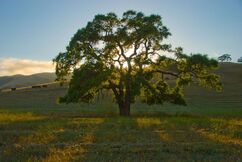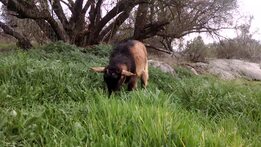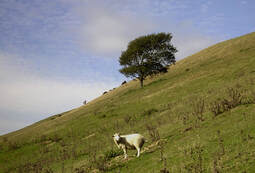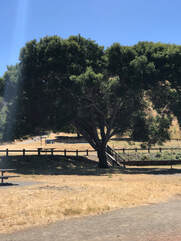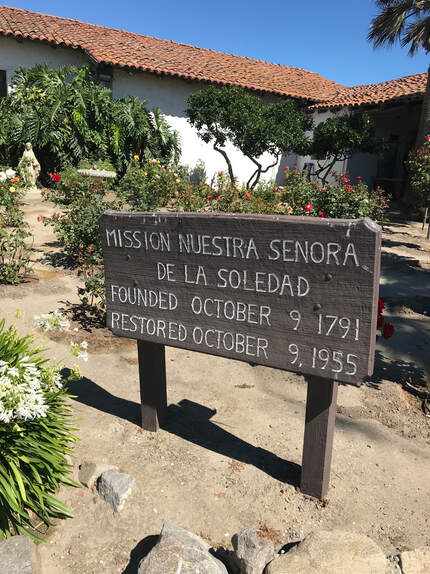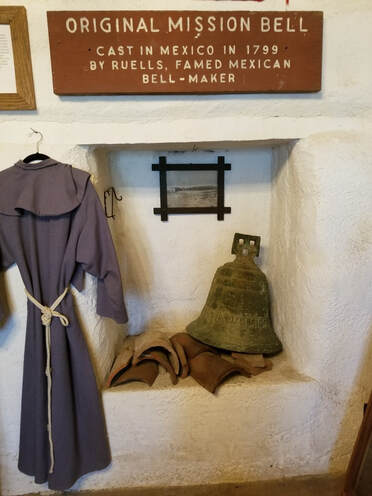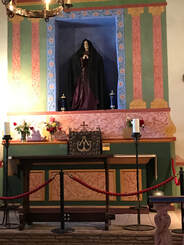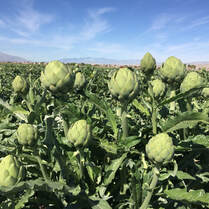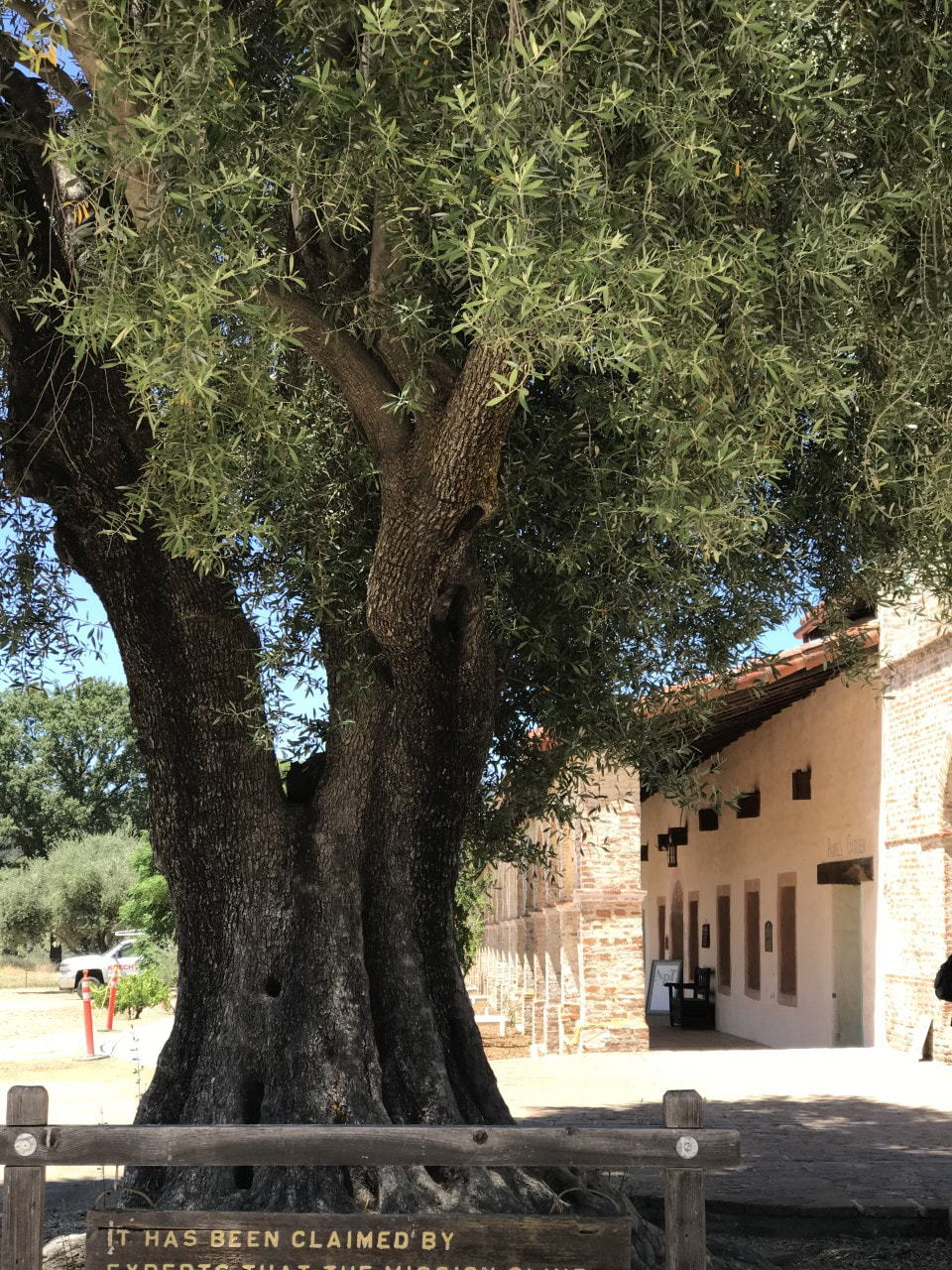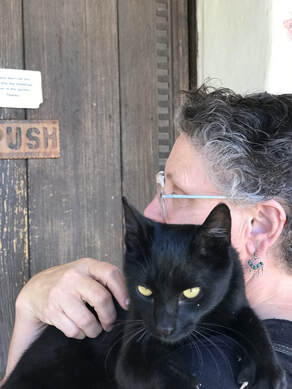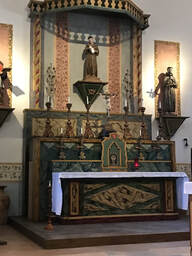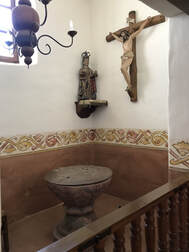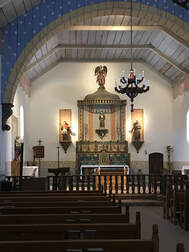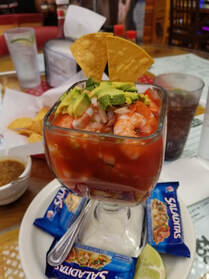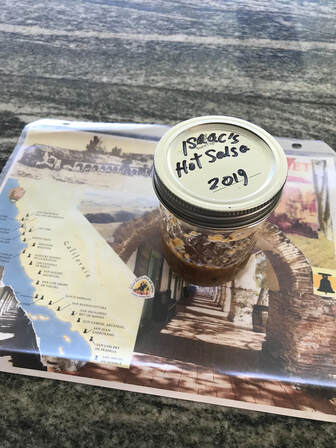Though my husband Wayne and I love living in a place where it never gets cold and everyone can spell our last name, the lure of California, lingers.
All of our brothers, sisters, nieces, nephews and our son David live in California. Although many of our family members have come here to visit us, and to enjoy a tropical vacation, we still look forward to yearly returns to the place where we first met and where we spent the first fifty years of our marriage.
A favorite element of California culture is the road trip, a tradition that continues from Spanish colonial days to the present. In my May 2018 blog, “Breakfast in San Diego,” I invited you to visit Old Town, where the first of California’s twenty-one Spanish missions, San Diego de Alcala, was established in 1769 by St. Junipero Serra, the founding “Father” of the California Mission system. Fr. Serra’s plan was to start in the extreme south of Alta California, just over the border with Mexico, and build missions, each a day’s walk north from the previous mission, thus creating a string of missions from south to north, covering the entire territory of Northern California. Thus, El Camino Real (The Royal Road or The King’s Highway) was established. This six-hundred-mile California Mission Trail remains today as a major thoroughfare linking the state’s principal metropolitan areas from San Diego to San Francisco and passing through some of the loveliest farmland on earth. U.S. Highway 101 runs in proximity to the original Mission Trail, but the name El Camino Real is still widely used, identified by Mission Bell historic road signs. Some of California’s best-known landmarks, such as Stanford University, are located on El Camino Real.
In my September 2017 blog, “A California Road Trip,” Kathleen and I traveled north from my brother John’s home in Milpitas, California, to Loomis in the foothills of the Sierra Nevada mountains. Along the route, we passed Mission San Jose, namesake of the sprawling city of San Jose, now the home of Silicon Valley. Mission Santa Clara de Asis (St. Clare of Assisi,) established in 1777 and now surrounded by Santa Clara University, is located a day’s walk to the south west.
Just last month, my July 2019 blog, “Sun and Sand in Santa Cruz,” included a visit to Mission Hill, where Holy Cross church sits on the original location of Mission Santa Cruz. Indeed, it is difficult to take a road trip in California without bumping into one of the historic California Missions. This year on my annual visit to California, Kathleen and I decided to travel south from our headquarters at my sister Margaret’s home in Watsonville, to explore two of the lesser known and more remote Missions, Soledad and San Antonio de Padua.
This mini road trip covered a mere sixty-six miles from Watsonville to King City on Highway 101, but it took us back to the time when the native Esselen and Ohlone people lived as hunter gatherers in this fertile wilderness area and moved to the coast in summer to feast on mussels and abalone before the Spanish colonists arrived. These native people hunted deer and rabbits for food and gathered acorns from the abundant oak trees found throughout California’s central valleys and foothills. The Ohlone and Esselen devised an elaborate process of leeching the acorns to make them edible, then pounding them into flour to make mush or bread. Not everyone realizes that acorns, which we consider poisonous, were a primary food source for the native people of central California for centuries.
Meandering down Highway 101, with BMWs and Teslas whizzing by us on the left, we passed the small communities of Chular and Gonzales before reaching our first stop, Soledad, twenty-five miles south east of Salinas. This community came into being when Fr. Fermin de Lasuen, the Franciscan priest who succeeded Junipero Serra, established Soledad Mission on October 9, 1791. The original Spanish name of this mission is La Mision de Maria Santisima, Nuestra Senora Dolorisima de la Soledad, translated as The Mission of Mary Most Holy, Our Most Sorrowful Lady of Solitude. This very solemn and sobering name refers to the lonely sorrow of the Virgin Mary during the time between her son Jesus’ death by crucifixion and his resurrection. Literary scholars tell us that John Steinbeck chose the town of Soledad as the setting for his 1937 novel Of Mice and Men because the theme of loneliness and solitude pervades the story.
The third and fourth rooms in the mission museum provide detailed information and artifacts pertaining to the period after 1835 when Governor Jose Figueroa of Mexico “secularized” all of the California mission properties, expelling the Franciscans who intended for all the mission lands to be held in trust for the native people who lived and worked at the missions. Instead these lands were granted primarily to Mexican citizens of Spanish descent as a way of encouraging settlement of the coastal regions of Alta California through cattle and sheep ranching. The owners of most of these Rancheros patterned their lives on the landed gentry of Spain. Many of the native people who had lived and worked at the missions became farm hands on the Rancheros such as Rancho San Vicente in Soledad. The words Ranchero and Rancho are still used in many place names throughout California.
It was during the period of “secularization” that many of California’s Franciscan Missions fell into disrepair, and Soledad Mission was no exception. Devastating floods in the 1830s speeded the deterioration process, leading to the collapse of the Mission church. Since the restoration process began in the 1950s, extensive archeological studies and excavation projects have been ongoing. The original Mission bell, held for safekeeping at other missions for 143 years, has been returned, and the olive grove is being restored with cuttings from the 200 -year-old trees at Mission Purisima Conception in Lompoc.
Once back on Highway 101, the next town past Jolon is King City, the metropolis in the area with a population of 12,874, eighty-seven percent Latino. King City sits on the Salinas River, fifty-one miles south east of Salinas. The town’s historic claim to fame is the fact that Gaspar de Portola, leader of the first Spanish expedition to Alta California, camped on the Salinas river near King City’s current location in 1769. Fortunately for us, King City today is full of taquerias.
Since the Salinas Valley as the crow flies is only about forty miles from the coast, we felt safe in choosing a Mexican restaurant that served sea food. Fish tacos were abundant all over town, but we chose a little place called El Lugarcito, (yes, the name translates into English as “the little place.”) This festively over-decorated spot is clearly a local gathering place, as four young women, without a husband, child or boyfriend in sight, were already sipping on giant Margaritas in the early afternoon. These enormous refreshments were served in fishbowl-like stemmed containers which actually had metal clips on the rim holding upside down beer bottles (or could they have been wine coolers or soda pop?) pouring even more libations into the already generous elixirs.
We skipped the happy drinks and went straight to the menu. I chose Caldo de Pescado (fish soup,) which arrived in a bowl even bigger than the Margarita glasses. It was a perfectly seasoned spicy broth filled with big chunks of potatoes and carrots and an entire fish, skin bones and tail, though thankfully not the head, cut into five or six horizontal slices. Served with fresh tortillas and lime wedges, this hearty soup was divine!
Kathleen was just as lucky. She ordered the Coctel de Camarones (shrimp cocktail,) which arrived in one of the huge Margarita fishbowls, loaded with freshly cooked shrimp, spicy red sauce and chopped avocado. A perfect end to a perfect California Road Trip. To keep these happy memories alive and to infuse them into your own daily lives wherever you may live, we leave our readers with the recipe for the best California-Mexican Hot Sauce we have ever eaten.
Isaac’s Roasted Tomato Salsa
Makes: 3-4 cups of Salsa
- 6 large tomatoes, cored (ripe summer tomatoes are best.)
- 5-6 garlic cloves, peeled
- 2 pasilla chilies
- 4 jalapeno chilis
- 2-3 serrano chilis
- ½ teaspoon salt
- ¼ teaspoon freshly ground black bepper
- ½ teaspoon ground cumin
- ¼ teaspoon dried Mexican oregano, crumbled
- In batches, roast the cored tomatoes on a medium hot griddle, turning the tomatoes with tongs to blacken all the sides. Loosely cover the griddle with a lid or foil during the roasting process. When the tomatoes are shrunken and the skin is blackened, scrape the tomatoes and any juice into a food processor.
- Add the garlic to the last batch of tomatoes on the griddle and scrape the tomatoes and garlic into the food processor. Roast the chilis, also in batches, until the skin is blackened and bubbled.
- Transfer the chilis into a plastic bag as they are roasted, keeping the bag closed so the steam will loosen the skins. Let the chilis steam until they are cool enough to handle, about 10 minutes.
- Wearing gloves to protect your hands, cut open the chilis with a paring knife and scrape some of the seeds from the chilis. Then scrape off as much of the skin from the chilis as possible, but don’t worry if some of the skin remains on the chilis, as any remaining skin will be ground up in the food processor.
- Add the seeded and peeled chilis to the tomatoes and garlic in the food processor, and pulse, scraping down the sides as needed with a rubber spatula, until the mixture is uniformly chopped and of a smoothish but not totally liquid consistency. Season with salt, pepper, cumin and dried oregano, adding more or less of each spice to taste.
- Transfer the Salsa to 3 or 4 one-cup glass jars with lids and refrigerate. The Salsa keeps well in the refrigerator for 3-4 weeks.


